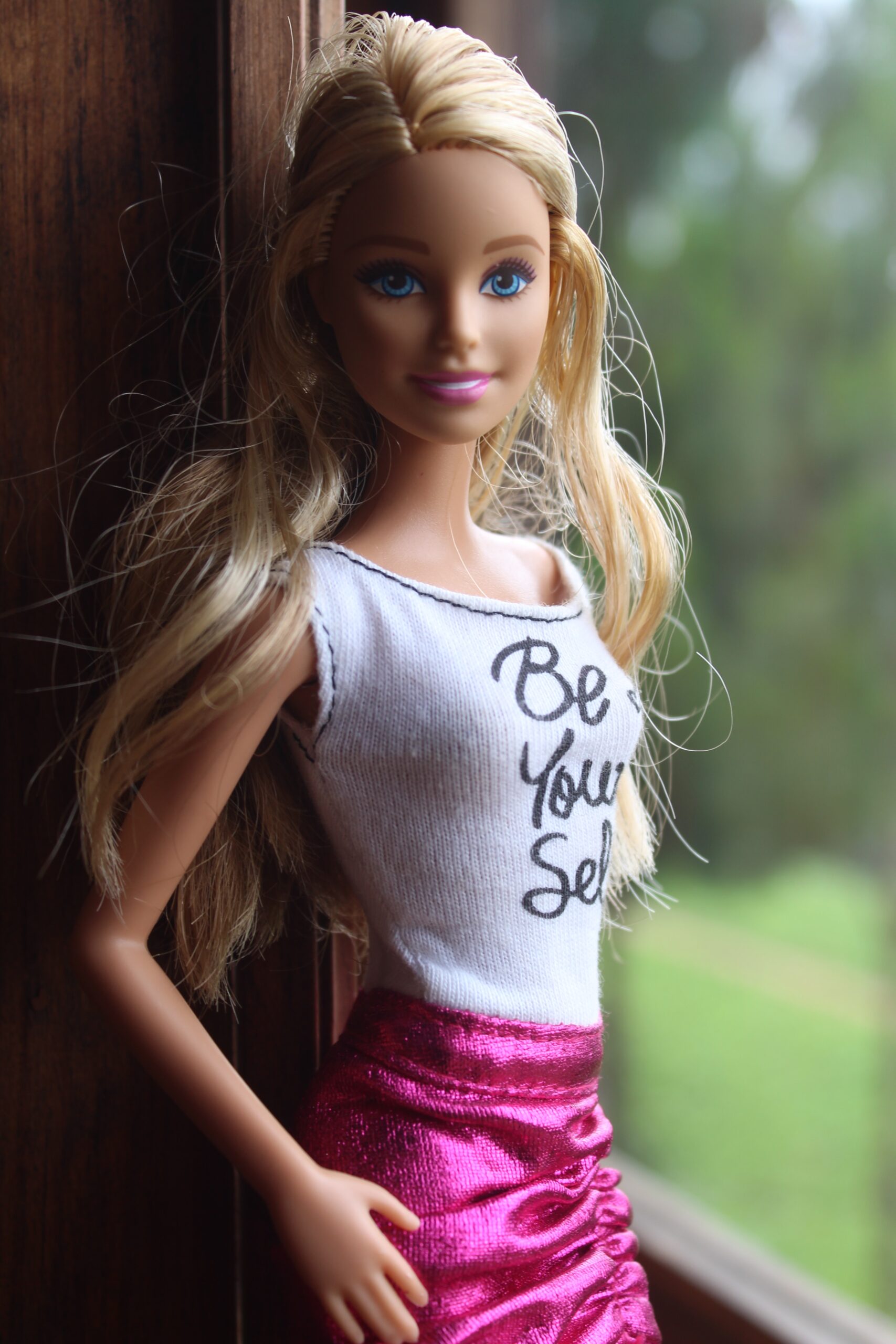Barbie is considered the most popular doll, as no other doll brands or toy lines have sold more dolls in different countries around the world than the Barbie brand. Barbie is introduced and currently sold by Mattel, one of the biggest toy companies in the world that was founded by a couple and a close friend and business partner. To know more about the doll and the company behind its success, here are the origins of Barbie, the world’s most popular doll.
Mattel Before Barbie
Before the creation of Barbie, Mattel was already a relatively successful company that sold numerous best-selling toys, including a ukulele called Uke-A-Doodle (1947). Mattel was founded in January 1945 by Elliot and Ruth Handler and their business partner Harold “Matt” Matson. [1]
The name of the company was derived from Matt Matson and Elliot Handler’s names, specifically “Matt” and “El.” The company first operated in a garage in Los Angeles, and the products they sold back then were picture frames. They later began selling dollhouse furniture, which was made from the scraps of picture frames. Unfortunately, Matt Matson needed to leave the company in 1946 due to poor health, but before leaving, he sold his shares and stake in Mattel to the Handler couple.
The Bild Lilli Doll
The idea of Barbie was conceived when Ruth Handler was watching her daughter named Barbara play with paper dolls. Handler noticed that her daughter was giving adult roles to the paper dolls, so Handler thought about selling an adult-bodied doll so that children will have a much more durable toy to play with and give adult roles to.
During the 1950s, the most popular dolls that were available for children were baby dolls, and there were no adult-bodied dolls available in the US toy market. Ruth Handler expressed her idea to her husband, Elliot, who was not keen on making adult-bodied dolls for children. The directors of Mattel also had the same sentiments as Elliot’s.
When Ruth Handler was almost ready to give up on the idea, she came across an adult-bodied doll called Bild Lilli during a trip to Europe in 1956 with her children. Bild Lilli was a popular doll in Germany and other countries in Europe and is based on a popular character that appeared in a satirical comic strip for Bild, a German tabloid newspaper. The comic strip was drawn and written by cartoonist Reinhard Beuthien. [2]
The Bild Lilli doll was first sold in Germany in 1955. The doll was initially marketed toward adults, but it eventually became popular among kids in Europe. What made the doll appealing to children is that they are able to dress up the doll in many different outfits that were sold separately.
The Creation of Barbie
The success of the Bild Lilli doll inspired Ruth Handler to try her idea again. To prove that adult-bodied dolls can be popular among children, Handler bought three Bild Lilli dolls. Handler gave one doll to her daughter Barbara, and the two remaining dolls were used by Handler during a meeting as proof that Mattel can market and sell adult-bodied dolls successfully. Mattel eventually agreed with Handler’s idea, and with the help of a toy designer named Jack Ryan, Handler was able to redesign the Bild Lilli doll and create the first-ever Barbie doll.
The Barbie doll, which was named after Ruth Handler’s daughter Barbara, was introduced on March 9, 1959, at the North American International Toy Fair in New York City. [3] The first Barbie doll wore a swimsuit that had black and white zebra stripes. The swimsuit was designed by a fashion designer at Mattel named Charlotte Johnson. As for the hairstyle, the doll was sporting a top ponytail that was available in two colors, blonde and brunette.
The first batches of Barbie dolls were manufactured in Japan, and the clothes of the dolls were hand-stitched by homeworkers in the country. In the first year of the doll’s production, Mattel was able to sell about 350,000 units.
Issues with the Bild Lilli Doll
Shortly after licensing the Bild Lilli doll, a toy business called Louis Marx and Company sued Mattel in 1961 for making a take-off or direct copy of Bild Lilli. Mattel counter-sued and the case was settled out of court two years later. Then, in 1964, Mattel bought the patent rights for the Bild Lilli doll for $21,600. The purchase of Bild Lilli’s patent rights subsequently ended the production of the toy line.
Interestingly, it wasn’t just the Barbie doll that allegedly copied the Bild Lilli doll, as there were also other dolls that were manufactured and sold in various countries. Most of the companies that copied the Bild Lilli doll were found in Hong Kong, and these companies would then sell the dolls in neighboring countries.
There were also copies that were sold in Spain, although the dolls sold there had darker skin and an articulated waist. Unfortunately, the Spanish copies did not sell well in Spain, as the country was relatively conservative during that time and the doll was considered “offensive” and should not be played by children.
Today, Bild Lilli dolls are considered collector’s items, and some of the dolls in great condition were sold for thousands of euros or dollars in auctions or stores. One Bild Lilli doll is displayed at the Coburg Doll Museum in Bavaria, Germany, and this particular doll is described by the museum as the “grandmother” of the Barbie doll. Bild Lilli dolls can also be found in private collections, where the dolls are stored in display shelves.
Changes to the Barbie Doll
During the early years of the Barbie doll’s production, many parents complained about the doll looking too much like an adult, as it had distinct breasts and an unrealistically curved stomach and hips. However, those features were there to emphasize that the Barbie doll was an adult, and Ruth Handler believed that Barbie should have an obvious adult appearance to make her look different from the dolls that were available in the 1960s.
However, in the late 60s, Mattel started to soften the features of Barbie in order for her to have fewer curves and “normal” body proportions. It was also in the 60s when Barbie’s Dreamhouse was introduced. The first version of Barbie’s Dreamhouse features pieces of furniture that were trendy in the 60s, like brightly colored rugs and lounge chairs. For more information on 60s style home décor, check out our Nostalgic 60s Home Décor Ideas.
In 1961, Barbie’s male counterpart, Ken, was introduced. [4] Ken, whose full name is Kenneth Sean Carson, had the same features as Barbie, as kids can dress the doll up in different outfits and give him adult roles or jobs. Ken is described numerous times in advertisements and boxes as Barbie’s boyfriend, although that is not often the case. From 1961 up to the present, Ken has held more than 40 jobs or occupations that are represented in different iterations of the doll. These occupations include barista, astronaut, cowboy, dancer, and dentist.
In 1971, Barbie’s eyes were changed so that she is looking forwards instead of sideways. The sideways glance was supposed to indicate Barbie’s demure personality, but it was eventually changed so that the Barbie doll can have the same forward-looking eyes as other human dolls and toys that were available during that era.
Barbie as a Cultural Icon
In 1974, a section of New York City’s Time Square was renamed Barbie Boulevard due to the cultural and historical significance of the doll in the United States. However, the name only lasted for a week and was just done for promotional purposes.
Unfortunately, the new look of Barbie’s eyes would be the last change that Ruth Handler would make for the doll, as she and her husband Elliot would be removed from Mattel in 1974 after they were found guilty of issuing misleading and fake financial reports for the company. The then-vice president of Mattel, Arthur S. Spear, took control of the business in 1975. It was only in 1980 when Ruth Handler sold her stock for Mattel and let go of the company she founded with her husband.
It was in 1984 when Barbie first appeared in a form of media, namely a video game of the same name that was released for the Commodore 64 8-bit home computer and published by now-defunct game company Epyx. From then on, Barbie would become a media franchise outside of its toy line.
Besides being one of the best-selling toy lines, Barbie would also become one of the highest-grossing media franchises of all time. Some of the most notable movies that featured Barbie include Barbie as Rapunzel (2002), Barbie of Swan Lake (2003), and Barbie as the Princess and the Pauper (2004).
One of the highest-grossing Barbie films is the eponymous movie that premiered in 2023 and was directed by Greta Gerwig, an American actor, writer, and director known for directing critically acclaimed films such as Lady Bird (2017) and Little Women (2019). The film became one of the highest-grossing films of 2023, as it was able to get more than $1.05 billion at the box office against a $128 to $145 million budget.
Barbie continues to be one of the best-selling toy lines on the market, and its popularity may never really fade, as Mattel is doing its best to keep the toy line as fresh as possible for each new generation of children around the world. If you want to give Barbie dolls as gifts to loved ones, read our Nostalgic 60s Gift Ideas to know more about specific dolls to buy, as well as other 60s-themed items that can serve as alternative gift options.
References
[1] Lukas, P. (2003, April 1). Mattel: HOW A STYLISH DOLL BECAME A HEAD-TURNING CLASSIC AND PUT A PAIR OF FLEDGLING ENTREPRENEURS IN PLAY. CNN. Retrieved August 10, 2023, from https://money.cnn.com/magazines/fsb/fsb_archive/2003/04/01/341015/
[2] Dean, G. (2023, July 25). Barbie owes her existence to a 1950s German comic strip. Business Insider. Retrieved August 10, 2023, from https://www.businessinsider.com/barbie-history-bild-lilli-mattel-ruth-handler-german-comic-strip-2023-5
[3] Byrne, K.J. (2023, March 9). On this day in history, March 9, 1959, Barbie makes fashionable world debut at New York Toy Fair. Fox News. Retrieved August 10, 2023, from https://www.foxnews.com/lifestyle/this-day-history-march-9-1959-barbie-makes-fashionable-world-debut-toy-fair
[4] Coleman, T. (2023, July 9). The evolution of Barbie’s design over the years. The Week. Retrieved August 10, 2023, from https://theweek.com/feature/briefing/1024861/the-evolution-of-barbies-design-over-the-years


